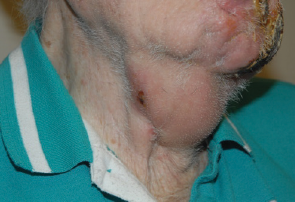Clinical report highlights how disease progression can mimic head, neck cancer


Clinical report highlights how disease progression can mimic head, neck cancer
What incremental costs are associated with head and neck cancer (HNCa), and how do they compare with the costs associated with other common cancers?
Does the use of the temporoparietal fascia free flap (TPFF) for pharyngeal closure reinforcement reduce the incidence of pharyngocutaneous fistula (PCF) in the salvage setting?
Is neck dissection required routinely in the management of node-positive head and neck squamous cancer after definitive radiation therapy or chemoradiation therapy?
Does reconstructive surgery result in measureable improvement in quality of life and function in the setting of mandibular osteoradionecrosis?
Is positron emission tomography-computerized tomography (PET-CT) scanning cost-effective for the management of the neck after chemoradiotherapy (CRT)?
What are the clinical and radiologic variables associated with recurrence using magnetic resonance imaging (MRI) following vestibular schwannoma (VS) resection?
Understanding pre-existing attitudes of patients and their caregivers regarding quality of life versus quantity of life may help otolaryngologists determine how to better use healthcare resources for end-of-life care.
How do survival estimates for transoral robotic surgery (TORS) compare to intensity-modulated radiotherapy (IMRT) for early T-stage oropharyngeal cancer?
Does surgeon and/or institution resection volume predict long-term overall survival in head and neck cancer in a publicly funded healthcare system?